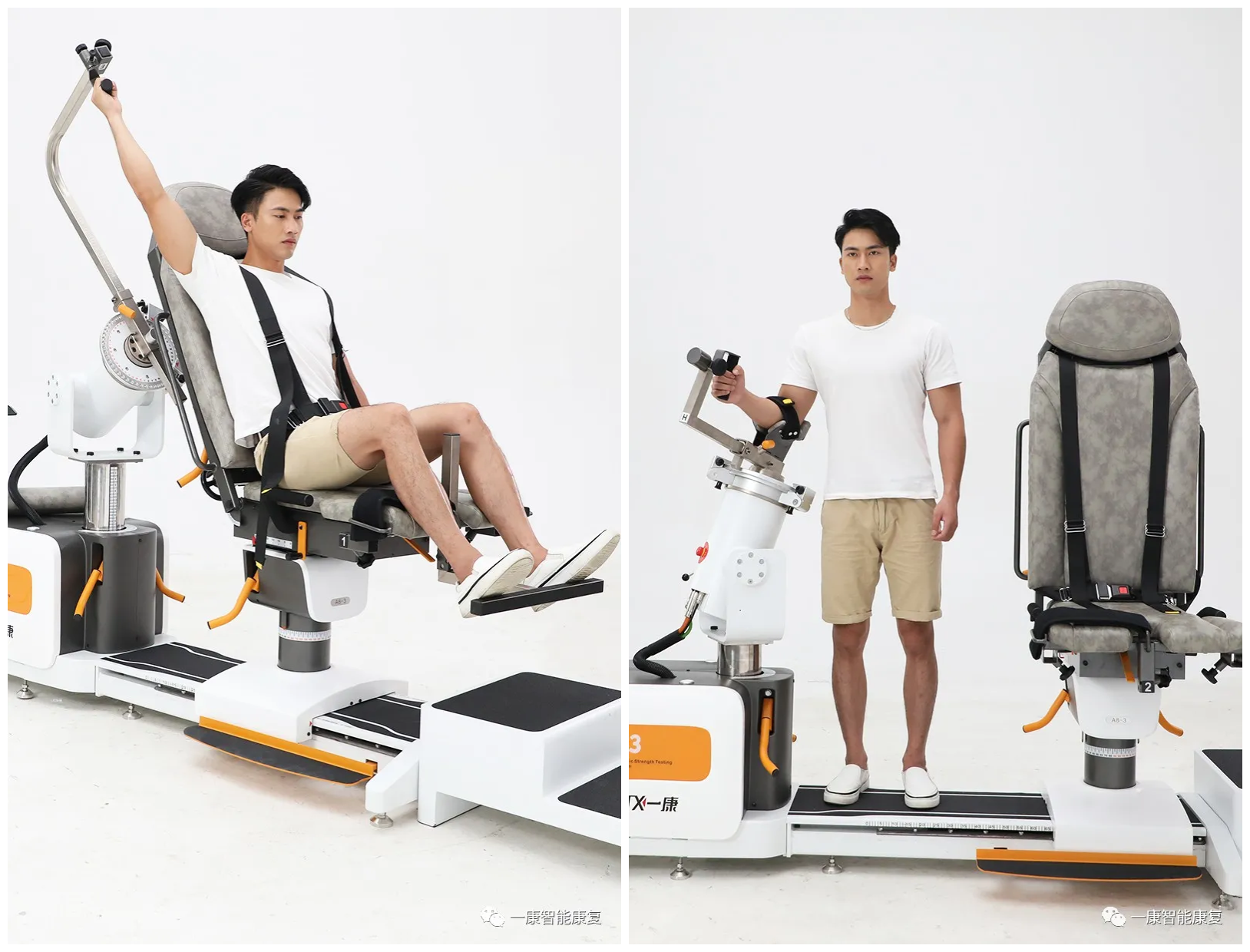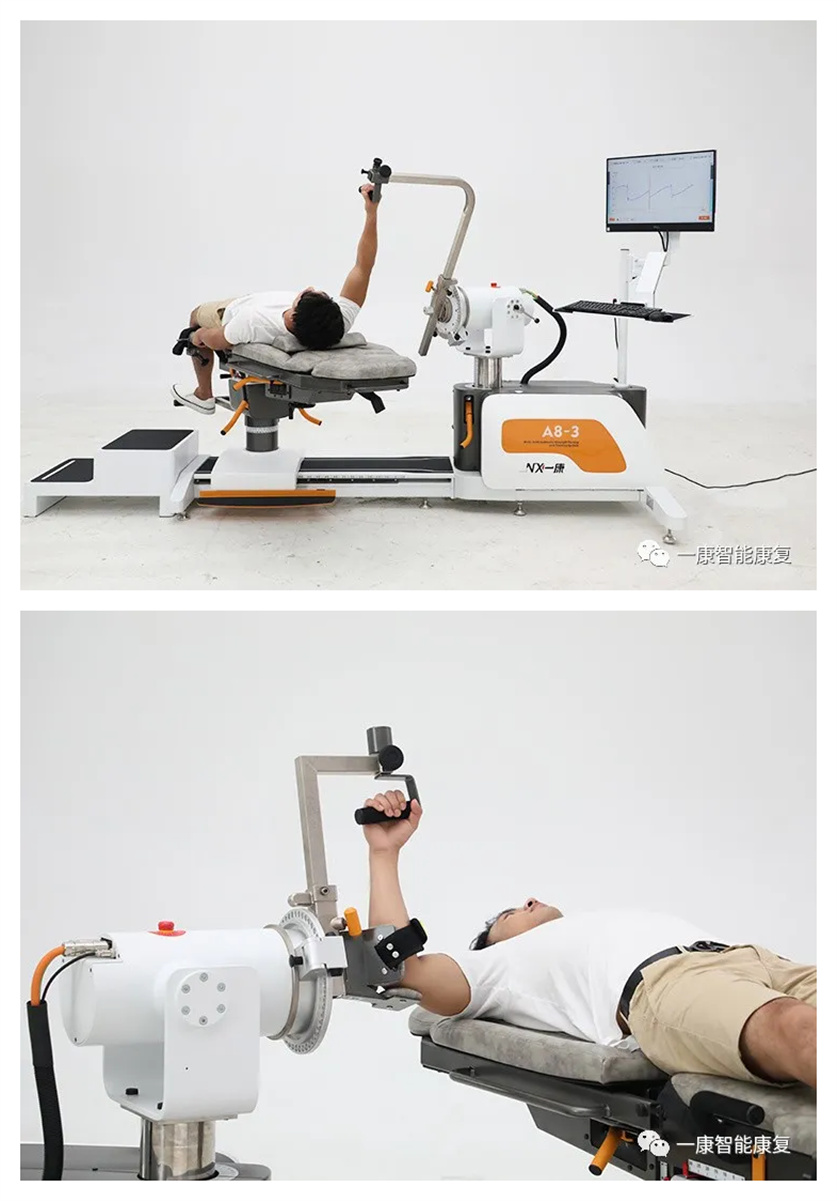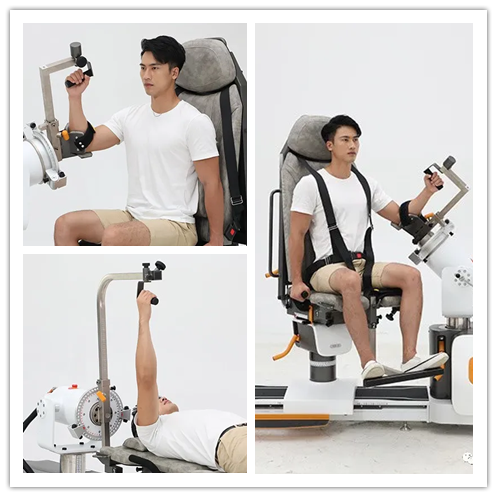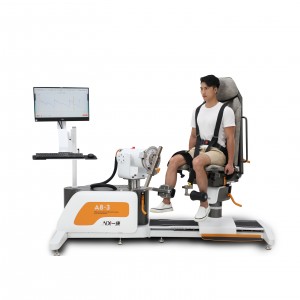Advantages of Isokinetic Muscle Strength Training in Shoulder Joint Treatment
Shoulder injury refers to the degenerative changes of the shoulder tissues, including rotator cuff and ligament, or the damage of the surrounding tissues caused by repeated overuse, trauma, etc. The main clinical manifestation is shoulder pain.
Common shoulder joint injuries include: subacromial impingement (SAIS), rotator cuff injury, frozen shoulder, tear of biceps brachii long head tendon, superior labrum anterior and posterior (SLAP) injury and shoulder instability.
Among the large joints of human body, shoulder joint is a complex joint with the largest range of motion. It consists of 3 bones (clavicle, scapula and humerus), 4 joints (acromioclavicular joint, sternoclavicular joint, scapulothoracic interparietal joint and glenohumeral joint) and the muscles, tendons and ligaments that connect them.
Under normal circumstances, the four joints of shoulder move simultaneously to ensure smooth and coordinating movement of the upper limbs. Among these joints, the glenohumeral joint is the joint with the largest range of motion, and the smallest osseous constraint. It is a ball (head of humerus)-and-socket (glenoid cavity) joint. ‘Ball (head of humerus) is relatively large while the ‘socket (glenoid cavity)’ is relatively shallow. This is similar to the golf ball on the tee. It gives the glenohumeral joint the maximum range of motion, but it also makes the shoulder prone to injuries and instability.

Causes of Shoulder Injury
1. Age factor
2. Repeat overuse of upper limb
3. Trauma

Clinical Therapeutic Advantages of Isokinetic Muscle Strength Training
In isokinetic muscle strength training, the agonist and antagonistic muscles of shoulder joint contract and stretch successively in repeated movements. It improves the muscle strength and in the meanwhile, stretch the rotator cuff muscle group of muscles, joint capsule, ligament repeatedly so as to loosen and soften them. In this way, the adhesion effect is further eliminated and the range of motion is expanded. In addition, the contraction and relaxation of muscles improves blood circulation of the muscles themselves. It is beneficial to the subside of aseptic inflammation and muscle self-repair, and it is conducive to pain relief. At the same time, isokinetic muscle strength training can improve the state of muscles and ligaments, increase the secretion and ductility of joint cavity, and gradually expand the range of joint motion.

About Isokinetic Strength Testing and Training System A8
Isokinetic strength testing and training equipment A8 is an assessment and training machine for six major joints of human. Shoulder, elbow, wrist, hip, knee and ankle can get isokinetic, isotonic, isometric, centrifugal, centripetal and continuous passive testing and training.
The training equipment can do assessment, and reports are generated before, during and after testing and training. What’s more, it supports printing and storage functions. The report can be used to assess human functional ability and as a scientific research tool for researchers. Various modes can fit all periods of rehabilitation and the rehabilitation of joints and muscles can achieve the highest level.
The isokinetic training equipment is suitable for neurology, neurosurgery, orthopedics, sports medicine, rehabilitation and some other departments. It is applicable to muscle atrophy caused by exercise reduction or other causes. What’s more, it can do with muscle atrophy caused by muscle lesions, muscle dysfunction caused by neuropathy, muscle weakness caused by joint disease or injury, muscle dysfunction, healthy person or athlete muscle strength training.

Read more:
Application of Isokinetic Muscle Training in Stroke Rehabilitation
What’s the Best Muscle Strength Training Method?
Isokinetic A8-2 — ‘MRI’ of Rehabilitation
Post time: Jan-07-2022






